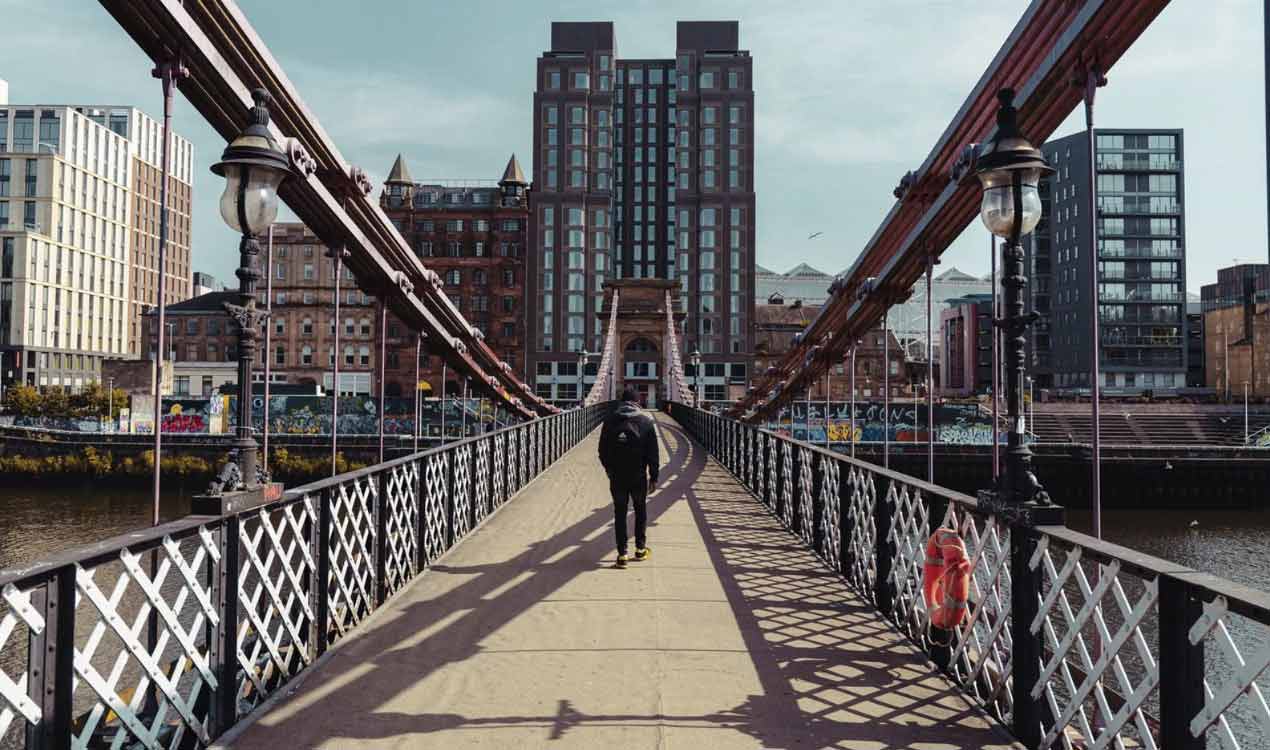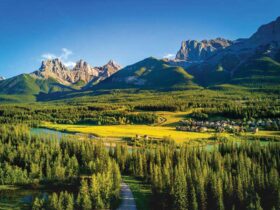Street Photography captures everyday life in public places through Candid Moments. Discover the Techniques, Tips, and the Rich History with us!
This type Photography captures candid moments of urban life, showcasing the spontaneity and diversity of public spaces. It’s known for its candid nature, often featuring people unaware they are being photographed, but it can also include inanimate objects and urban landscapes. The essence of Street Photography lies in its spontaneity and the ability to tell stories through moments frozen in time.
Historical Background Street Photography
This type Photography has a rich historical background that reflects the evolution of photography itself, as well as broader social and cultural changes. Here’s an outline detailing its development and key milestones:
| Historical Background | Of Street Photography |
| Origins & Early | Invention of Photography (1839) |
| Developments | Early Street Scenes |
| The Golden Age of | Advancements in Technology (Late 19th Century) |
| Street Photography | Alfred Stieglitz and the Pictorialist Movement |
| The Rise of Modern Street Photography | Henri Cartier-Bresson and the Decisive Moment (1930s-1950s) |
| Walker Evans and Documentary Style | |
| Post-War Era and the | The New York School (1940s-1960s) |
| Evolution of Style | Street Photography in the UK |
| Contemporary Street | The emergence of Color Photography (1970s-1980s) |
| Photography | Digital Revolution (1990s-Present) |
| Key Themes and | Social and Political Commentary |
| Influences | Global Perspectives |
Origins and Early Developments
Invention of Photography (1839)
Daguerreotype and Calotype: Early photographic processes that made it possible to capture images of the street, though limited by long exposure times.
Early Street Scenes
- Louis Daguerre: Captured one of the earliest known photographs of a person, a street scene in Paris in 1838.
- Charles Nègre: Notable for his early photographs of Parisian street life.
The Golden Age of Street Photography
Advancements in Technology (Late 19th Century)
- Smaller Cameras: The introduction of smaller, more portable cameras like the Kodak camera (1888), which democratized photography.
- Faster Film: Improved film speeds allowed for quicker exposures, capturing more spontaneous moments.
Alfred Stieglitz and the Pictorialist Movement
- Stieglitz’s Work: Known for his photographs of New York City, blending art with documentary.
- Camera Work: Stieglitz’s journal that promoted photography as a legitimate art form.
The Rise of Modern Street Photography
Henri Cartier-Bresson and the Decisive Moment (1930s-1950s)
- Leica Camera: The introduction of the Leica 35mm camera revolutionized this type photography, offering portability and discretion.
- The Decisive Moment: Cartier-Bresson’s philosophy and his seminal book “Images à la Sauvette” (The Decisive Moment) emphasized capturing the perfect moment.
Walker Evans and Documentary Style
American Photographs (1938): Evans’ work documenting everyday life in America, focusing on the ordinary and overlooked.
Post-War Era and the Evolution of Style
The New York School (1940s-1960s)
- Robert Frank: “The Americans” (1958) offered a critical view of American society through raw and candid images.
- Diane Arbus: Known for her portraits of marginalized individuals, adding depth to the genre.
Street Photography in the UK
- Bill Brandt: Documented British life with a unique blend of realism and surrealism.
- Tony Ray-Jones: Captured the eccentricities of British life, influencing later photographers like Martin Parr.
Contemporary Street Photography
Emergence of Color Photography (1970s-1980s)
- Joel Meyerowitz: One of the pioneers of color street photography, capturing the vibrancy of urban life.
- William Eggleston: Known for his richly colored images of the American South, transforming everyday scenes into art.
Digital Revolution (1990s-Present)
- Digital Cameras: Made street photography more accessible with instant feedback and higher shooting capacities. Smartphone Photography: Further democratized the genre, allowing anyone to capture and share street scenes.
Key Themes and Influences
Social and Political Commentary
Street photography often reflects societal issues, documenting protests, daily struggles, and cultural shifts.
Global Perspectives
Expansion of this type photography across the globe, with significant contributions from photographers in Asia, Latin America, and Africa.
Importance of Street Photography
This type of Photography is not just about taking pictures; it’s about capturing the pulse of life, the spirit of communities, and the stories that unfold in everyday life. Its significance extends beyond art, serving as a powerful tool for social reflection, historical preservation, and personal expression.
1. Cultural Documentation:
- Historical Record: Street photography serves as a visual record of daily life, capturing the essence of different eras and cultures.
- Cultural Insight: Provides a window into the customs, habits, and lifestyles of people worldwide.
2. Social Commentary:
- Highlighting Issues: It can bring attention to social issues, inequalities, and injustices, provoking thought and discussion.
- Human Condition: Reflects the joys, struggles, and nuances of the human experience, fostering empathy and understanding.
3. Artistic Expression:
- Creative Outlet: Photographers can express their vision and creativity through spontaneous and unplanned moments.
- Unique Perspectives: Each photographer’s unique perspective and style contribute to the richness of the genre.
4. Capturing the Unseen:
- Everyday Moments: Celebrates the beauty in ordinary, everyday moments that might otherwise go unnoticed.
- Urban Life: Chronicles the vibrancy and dynamism of urban environments, showcasing the interplay between people and their surroundings.

5. Preserving History:
- Timeless Stories: Captures fleeting moments that tell timeless stories, preserving them for future generations.
- Public Memory: Helps build a collective memory of public spaces and community life.
6. Inspiration and Education:
- Inspiring Others: Inspires new photographers and artists to explore the streets with their cameras.
- Educational Tool: Acts as a resource for learning about different photographic techniques and approaches.
7. Personal Growth:
- Observational Skills: Enhances the photographer’s ability to observe and appreciate the world around them.
- Patience and Timing: Teaches the importance of patience and the skill of anticipating the right moment.
Key Characteristics of Street Photography
It is a distinct genre with several key characteristics that set it apart from other forms of photography. These characteristics are integral to understanding and practicing Street Photography effectively:
1. Candid Shots:
Unlike Posed Photography, this type Photography aims to capture genuine, unposed moments. It’s captures spontaneous moments without staging or directing subjects. The authenticity of these candid shots is central to the genre.
The Decisive Moment
The Decisive Moment in Street Photography refers to capturing a fleeting, decisive instant that encapsulates the essence of a scene. It’s about anticipating and seizing the perfect moment when elements align to convey emotion, narrative, or significance. Mastering this timing is key to creating impactful and evocative street photographs.
Candid Shots vs. Posed Shots
Candid Shots in this type Photography capture authentic, unposed moments, revealing genuine emotions and interactions. They offer a raw and spontaneous view of life.
Conversely, Posed Shots involve subjects consciously aware of the camera, allowing for composition and control but potentially losing the naturalness of candid moments. Both approaches offer distinct storytelling possibilities.
Capturing Emotions
Capturing Emotions in Street Photography involves observing and anticipating moments where emotions are genuine and raw. It’s about focusing on facial expressions, body language, and interactions that convey feelings such as joy, sadness, surprise, or contemplation. Patience, empathy, and keen observation are essential to capturing these fleeting and authentic emotional moments.
It often focuses on capturing genuine expressions and interactions, reflecting real-life emotions and activities.
Documenting Daily Life
Documenting Daily Life in This type of Photography involves capturing the ordinary moments and activities of people in public spaces. It’s about revealing the beauty, complexity, and humanity of everyday life. From mundane routines to special moments, street photographers chronicle the diverse experiences, interactions, and scenes that make up the fabric of society.
2. Public Spaces:
Common settings include streets, parks, markets, and public transport.
- Urban Environments: Typically shot in public places such as streets, parks, markets, and public transportation systems.
- Dynamic Settings: The ever-changing backdrop of urban environments provides a rich canvas for street photographers.
3. Human Element:
People are a frequent subject, but the genre can also focus on objects or scenes that convey a message or mood.
- People-centric: While street photography can include urban landscapes and objects, the presence of people is a common and compelling element.
- Social Interactions: It often highlights human interactions and societal behaviors, offering a glimpse into everyday life.
4. Storytelling:
Effective Street Photography often tells a story or evokes emotions through the captured scenes.
- Narrative Images: Each photograph aims to tell a story or convey a message, capturing moments that resonate with viewers.
- Emotional Impact: Successful street photos often evoke emotions, whether it’s joy, sadness, curiosity, or nostalgia.
5. Spontaneity and Unpredictability:
It relies on the photographer’s quick reflexes and keen observation skills to capture fleeting moments.
- Impromptu Shots: The unpredictability of the streets means photographers must be ready to capture moments as they happen, requiring quick reflexes and a keen eye.
- Serendipitous Moments: Many iconic street photographs are the result of being in the right place at the right time.
6. Composition and Technique:
- Creative Framing: Effective use of composition techniques such as the rule of thirds, leading lines, and framing to create visually compelling images.
- Depth and Layers: Often includes multiple layers of interest, with foreground, middle ground, and background elements that add depth to the image.

7. Use of Light and Shadows:
- Natural Lighting: Street photographers primarily rely on natural light, using its variations to enhance mood and atmosphere.
- Play with Shadows: Shadows and reflections are frequently used to add complexity and intrigue to images.
8. Cultural and Societal Reflection:
- Cultural Snapshots: Reflects the culture, traditions, and daily life of a place, providing insight into its social fabric.
- Social Commentary: Can serve as a commentary on societal issues, highlighting disparities, protests, or moments of social significance.
9. Minimal Equipment:
- Compact Gear: Street photographers often prefer small, unobtrusive cameras and lenses to remain discreet and mobile.
- Essential Tools: Minimalism in equipment encourages a focus on skill and creativity rather than reliance on gear.
10. Ethical Considerations:
- Respect for Subjects: Ethical street photography respects the dignity and privacy of subjects, avoiding exploitation or harm.
- Consent and Awareness: While not always possible to obtain consent, ethical considerations about the impact on subjects are important.
11. Diverse Approaches:
- Black and White vs. Color: Some photographers prefer the timeless quality of black and white, while others use color to capture the vibrancy of the streets.
- Various Styles: Ranges from classic, documentary-style photography to more artistic and abstract interpretations.
12. Adaptability:
- Versatility: Street photographers must adapt to various conditions and situations, from busy city centers to quiet suburban streets.
- Responsive Shooting: The ability to quickly adjust settings and respond to changing scenes is crucial.
Street Photography is a rich and multifaceted genre that thrives on spontaneity, human interaction, and the vibrant tapestry of urban life. Its key characteristics—candidness, storytelling, composition, and ethical consideration—make it a powerful form of visual expression that captures the essence of everyday moments in public spaces.
Themes and Subjects in Street Photography
Themes and Subjects in this type Photography offer a rich tapestry of human experiences and urban landscapes. Here are some common themes:
1. Urban Landscapes
– Capturing the architecture, infrastructure, and overall feel of the city.
– Highlighting the contrast between old and new, decay and renewal.
2. Street Portraits
– Documenting the diverse faces and expressions of people in public spaces.
– Revealing individual stories and personalities.
3. Everyday Moments
– Documenting ordinary activities like commuting, waiting, and interacting.
– Finding beauty in the mundane and overlooked.
4. Social Interactions
– Observing how people interact with each other, whether strangers or friends.
– Capturing gestures, conversations, and connections.
5. Street Art and Graffiti
– Documenting the vibrant street art scene, including murals, tags, and installations.
– Exploring the relationship between art, culture, and the urban environment.
6. Markets and Vendors
– Showcasing the hustle and bustle of markets, street stalls, and vendors.
– Capturing the colors, textures, and activities of local commerce.
7. Public Transportation
– Documenting the daily commute, crowded buses, trains, and stations.
– Highlighting the diversity and energy of urban transit systems.
8. Protests and Demonstrations
– Documenting social movements, protests, and gatherings.
– Capturing moments of activism, solidarity, and dissent.
9. Reflections and Shadows
– Playing with light, reflections, and shadows to create intriguing compositions.
– Experimenting with abstract and surreal imagery.
10. Emotions and Expressions
– Capturing candid moments of joy, sadness, surprise, or contemplation.
– Revealing the human side of city life through authentic emotions.
11. Patterns and Geometry
– Exploring the repetitive patterns, lines, and shapes in urban environments.
– Creating visually compelling compositions through geometry and symmetry.

12. Nature in the City
– Finding moments where nature intersects with urban life, such as parks, trees, and wildlife.
– Documenting the coexistence of natural and man-made elements.
13. Weather and Seasons
– Documenting how weather and seasons influence city life, from rain-soaked streets to sunny days.
– Capturing the changing moods and atmospheres throughout the year.
14. Isolation and Connection
– Exploring themes of loneliness, solitude, and connection in urban settings.
– Capturing moments of solitude amidst the crowds or moments of connection between strangers.
15. Timelessness vs. Modernity
– Highlighting the juxtaposition between timeless scenes and modern elements.
– Documenting how traditions and history coexist with contemporary life.
16. Architectural Elements
Architectural elements play a crucial role in street photography, offering opportunities for creative compositions and storytelling. Here’s how to incorporate them effectively:
- Skylines and Cityscapes
- Leading Lines
- Framing and Composition
- Textures and Patterns
- Scale and Perspective
- Reflection
- Minimalism and Abstraction
- Historical vs. Modern Architecture
- Details and Close-Ups
- Human Interaction
These themes offer endless opportunities for exploration and storytelling in Photography, allowing photographers to capture the multifaceted nature of urban life and human experiences.
Techniques for Stealth in Street Photography
1. Use a Small Camera: Opt for a compact camera or mirrorless setup to remain inconspicuous and avoid drawing attention.
2. Pre-focus and Zone Focus: Set your focus manually or use autofocus to pre-focus on a specific distance, ensuring quick and silent shooting.
3. Shoot from the Hip: Hold your camera at waist level and shoot without looking through the viewfinder, allowing for discreet and candid shots.
4. Blend In: Dress casually and avoid standing out to blend in with your surroundings.
5. Be Patient: Wait for the right moment rather than rushing to take a shot, ensuring you remain unnoticed.
6. Use Natural Cover: Utilize objects like walls, trees, or benches to conceal yourself while capturing candid moments.
7. Silent Shutter Modes: Disable any audible alerts or beeps on your camera to minimize noise.
8. Stay Aware of Your Surroundings: Maintain situational awareness to anticipate potential shots and avoid attracting unwanted attention.
9. Shoot in Burst Mode: Take multiple shots in quick succession to increase the likelihood of capturing the perfect moment while minimizing the chance of being noticed.
10. Keep Moving: Avoid lingering in one spot for too long to prevent drawing attention to yourself.
11. Shoot Wide Open: Use a wide aperture to achieve shallow depth of field, blurring backgrounds and emphasizing your subject while remaining inconspicuous.
12. Practice Discreet Gestures: Learn to adjust settings and compose shots subtly and efficiently without attracting attention.
13. Use Live View: If your camera has a tilting or articulating screen, use live view to compose shots discreetly from various angles.
14. Avoid Eye Contact: Refrain from making direct eye contact with potential subjects to minimize the chance of being noticed.
15. Shoot with Confidence: Act confidently and purposefully while shooting to appear less conspicuous and draw less attention to yourself.
By employing these stealth techniques, you can capture candid and authentic moments in street photography without disrupting the natural flow of the scene or attracting unwanted attention.
Legal and Ethical Considerations in Street Photography
As a Street Photographer, it’s important to navigate the legal and ethical considerations of the craft responsibly. By understanding and respecting the laws, rights, and feelings of others, you can create meaningful and impactful images while minimizing harm to your subjects and the communities you photograph. Always prioritize consent, respect, and integrity in your practice.
Legal Considerations
Legal considerations in street photography include respecting privacy laws, avoiding trespassing on private property, and understanding public space photography rights. For commercial use, obtain model release forms from identifiable subjects. Always stay informed about local regulations to ensure compliance and avoid legal issues.
1. Know Your Rights
– Familiarize yourself with local laws regarding photography in public spaces. Laws vary by country and region.
– Understand privacy laws and restrictions on photographing certain subjects, such as children or government buildings.
2. Model Release Forms
– Obtain written consent if you plan to use photographs of identifiable individuals for commercial purposes.
– Consider using model release forms even for non-commercial use to protect yourself legally.
3. Respect Private Property
– Avoid trespassing on private property when taking photos. Respect signs indicating restricted areas.
– Be mindful of photographing people in private settings, such as inside homes or businesses.
4. Copyright Protection
– Understand your rights as a photographer and how to protect your work from copyright infringement.
– Respect the copyright of others, including street artists and muralists.
Ethical Considerations
Ethical Considerations in street photography involve respecting privacy, obtaining consent when possible, and avoiding exploitation. Represent subjects truthfully and sensitively, especially vulnerable individuals.

Prioritize the dignity and context of those photographed, ensuring your work does not harm or misrepresent them. Maintain transparency about your intentions and usage.
1. Respect Subjects
– Dignity: Ensure your edits do not misrepresent or exploit your subjects. Respect the context and story of the original image.
– Contextual Integrity: Maintain the context of the photograph to preserve its original narrative and meaning.
– Be sensitive to cultural norms regarding photography and consent.
2. Avoid Exploitation
– Avoid depicting individuals in a derogatory or exploitative manner.
– Be mindful of power dynamics and avoid taking advantage of vulnerable subjects.
3. Context and Representation
– Consider the context in which your photographs will be presented and the potential impact on the subjects.
– Strive for accurate and respectful representation of people and communities.
4. Anonymity and Privacy
– Blur faces or obscure identifying features if individuals could be harmed by being identified in the photograph.
– Respect people’s right to privacy, especially in sensitive or intimate situations.
5. Maintain Authenticity
– Consider the potential consequences of your photography on subjects and communities.
– Realism: Keep edits subtle to preserve the integrity of the scene. Avoid over-processing that alters the reality of the moment.
– Ethical Boundaries: Refrain from adding or removing significant elements that could mislead viewers.
– Refrain from taking photographs that could cause harm or distress to individuals or groups.
6. Cultural Sensitivity
– Respect cultural practices and customs when photographing in diverse communities.
– Seek permission and guidance from residents when photographing cultural events or ceremonies.
7. Transparency
– Disclose Edits: Be open to significant edits if the image is used in journalistic or documentary contexts.
– Consistency: Apply a consistent editing style to create a cohesive body of work, especially in projects or series.
– Be honest and transparent about your intentions as a photographer.
– Communicate how and where your photographs will be used, especially in collaborative projects.
8. Educate and Advocate
– Use your photographs to raise awareness of social issues and promote positive change.
– Advocate for the rights and dignity of the people you photograph.
Post-Processing and Editing in Street Photography
Post-processing and Editing play a crucial role in Street Photography, enhancing the visual impact of your images while maintaining their authenticity. Here are key techniques and considerations for effective post-processing:
Basic Adjustments
1. Exposure and Contrast
– Exposure: Adjust the overall brightness to correct any underexposed or overexposed areas.
– Contrast: Enhance contrast to add depth and dimension, making elements in the image stand out.
2. White Balance
– Color Temperature: Adjust white balance to correct color casts and achieve natural-looking colors.
– Creative Choices: Experiment with warmer or cooler tones to convey different moods.
3. Cropping and Straightening
– Crop: Remove distracting elements and improve composition. Use cropping to focus on the main subject.
– Straighten: Ensure horizons and architectural lines are level for a professional look.
Advanced Adjustments
1. Sharpness and Clarity
– Sharpening: Apply sharpening to enhance details, but avoid overdoing it to prevent halos and artifacts.
– Clarity: Increase clarity to enhance mid-tone contrast, giving the image a crisper appearance.
2. Noise Reduction
– Luminance Noise: Reduce noise in low-light images to achieve a cleaner look.
– Color Noise: Address color noise separately to maintain color accuracy.
3. Color Adjustments
– Saturation and Vibrance: Enhance colors without making them look unnatural. Vibrance adjusts less saturated colors more than already saturated ones.
– Selective Color: Use tools like HSL (Hue, Saturation, Luminance) to fine-tune specific colors.
Creative Techniques
1. Black and White Conversion
– Monochrome Appeal: Convert to black and white to emphasize shapes, textures, and contrast.
– Filter Effects: Use color filters during conversion to enhance specific elements (e.g., red filter for dramatic skies).
2. Vignetting
– Subtle Vignettes: Add a slight vignette to draw attention to the center of the image and add depth.
– Creative Vignetting: Use stronger vignettes for a more dramatic, artistic effect.
3. Dodge and Burn
– Dodge: Lighten specific areas to draw attention or reveal details.
– Burn: Darken areas to add depth or reduce distractions.
Frequently Asked Questions on Street Photography
What is street photography?
It’s a genre that captures candid moments of life in public spaces. It focuses on spontaneous interactions, urban environments, and the essence of everyday life.
What distinguishes street photography from other genres?
It emphasizes candidness, capturing unplanned and authentic moments. It often involves a documentary approach, highlighting the unpredictability and spontaneity of urban life.
What are common subjects in This type photography?
Common subjects include people, urban landscapes, street scenes, social interactions, and everyday moments. Street photographers often seek out interesting characters, unique expressions, and dynamic compositions.
What role does composition play in street photography?
Composition is crucial, guiding the viewer’s eye and enhancing the storytelling aspect. Techniques like the rule of thirds, leading lines, framing, and symmetry help create compelling images.
How important is timing in This type photography?
Timing is essential for capturing the “decisive moment,” a concept popularized by Henri Cartier-Bresson. This involves clicking the shutter at the perfect instant to capture a meaningful or impactful scene.
What equipment is best for street photography?
Compact and unobtrusive cameras, such as mirrorless or small DSLRs, are preferred. Prime lenses, like 35mm or 50mm, are popular for their natural field of view and portability.
How does light affect street photography?
Natural light is often used to create mood and atmosphere. Street photographers learn to work with various lighting conditions, such as harsh midday sun, soft morning light, and dramatic shadows.
What are the ethical considerations in street photography?
Ethical considerations include respecting privacy, avoiding exploitation, and representing subjects truthfully. Obtaining consent when possible and being mindful of cultural sensitivities are also important.
Is editing allowed in This type photography?
Yes, post-processing is common to enhance image quality. However, ethical editing practices should be followed to maintain the authenticity and integrity of the captured moment.
Can street photography be staged or posed?
While traditional street photography emphasizes candid moments, some photographers incorporate posed elements. However, the primary focus remains on capturing genuine, unplanned interactions and scenes.
How do you deal with legal issues in street photography?
Understand local laws regarding public photography and privacy. In some cases, model releases may be required for commercial use of images. Respect private property and individuals’ rights.
How do you develop your style in street photography?
Developing a personal style involves experimenting with different techniques, studying the work of established photographers, and consistently practicing. Over time, a unique perspective and approach will emerge.
Conclusion
Street Photography requires a blend of technical skill, creativity, and ethical sensitivity to produce compelling images that resonate with viewers. Whether you’re a seasoned photographer or a beginner, It offers endless opportunities to explore and document the world around you.







Leave a Review